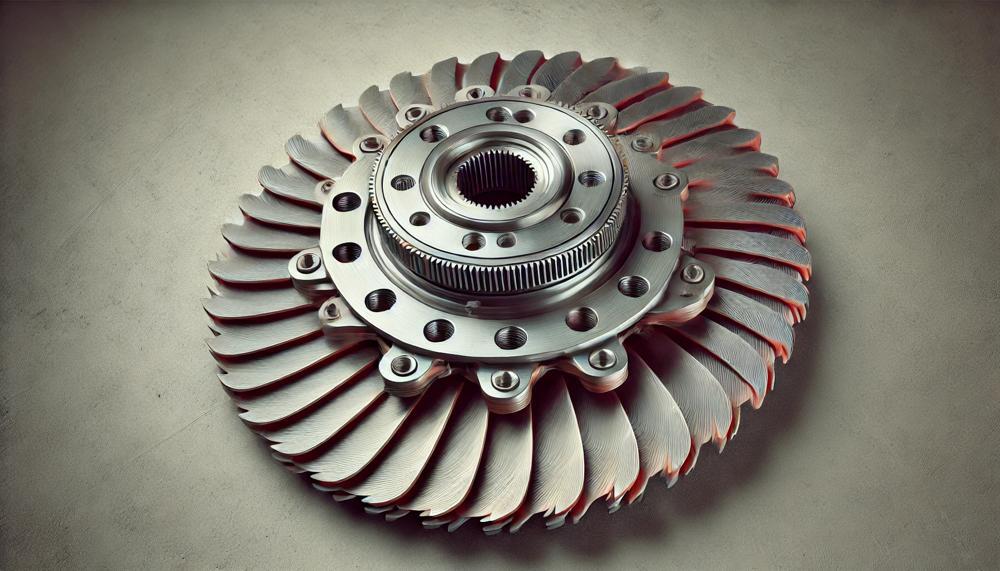Welcome to the dynamic world of flap discs, the unsung heroes of the abrasive industry. In the ever-evolving landscape of tooling and fabrication, the flap disc stands out as a versatile, indispensable ally. Designed to deliver a range of finishes, from aggressive material removal to subtle blending, these innovative tools are changing the game for professionals and hobbyists alike.
But what exactly makes flap discs so unique, and how can they revolutionize your workbench or project? Let’s dive into the heart of this subject:
- Versatility: Adapt to various surfaces and materials without swapping tools.
- Efficiency: Save time with faster material removal and fewer tool changes.
- Finish: Achieve a superior, smooth finish with minimal effort.
- Durability: Enjoy a longer lifespan than traditional sanding methods.
Join us as we unravel the multifaceted world of flap discs, shedding light on their primary uses, benefits, and why they might just be the tool you never knew you needed. Engage with the nuances of this tool in an accessible, engaging manner, and discover how it can elevate your work to new heights.
Contents
What Is a Flap Disc?
A flap disc is a specific type of abrasive tool frequently used in the metalworking, construction, and woodworking industries. It stands out for its unique design, where overlapping flaps of sandpaper-like material are affixed to a circular backing plate.
The radial arrangement of these flaps contributes to a more flexible, forgiving, and smooth grinding operation.
Main Uses of Flap Disc:
Metalworking: In the realm of welding, flap discs are invaluable for removing welds, smoothing rough surfaces, and refining edges and corners.
They are instrumental in preparing and finishing metal workpieces.
Construction: For grinding and smoothing concrete surfaces, flap discs are exceptional.
They effectively level uneven surfaces and remove imperfections, playing a pivotal role in preparing floors and removing paint or coatings during renovations.
Woodworking: The flexible nature of flap discs makes them ideal for sanding and finishing wood. They adeptly conform to irregular and curved surfaces, ensuring a smooth and uniform finish.
Comparison with Other Abrasives:
| Characteristic | Flap Disc | Other Abrasives |
| Lifespan | Longer due to multiple layers of abrasive material. | Often shorter, requiring more frequent replacements. |
| Flexibility | Highly flexible, allowing for smoother operation and access to hard-to-reach areas. | Less flexible, can be more rigid and challenging to maneuver. |
| Finish Quality | More consistent finish due to overlapping flaps. | Can result in uneven wear and a less consistent finish. |
Flap discs are also lighter and more suitable for delicate tasks compared to heavier grinding wheels. With grit sizes ranging from 24 to 120, they can be tailored to various work requirements. Their correct storage and use are key to maximizing their benefits and longevity.
How to Pick the Right Flap Disc
When choosing a flap disc for a specific welding project, consider the following factors:
| Material to be Welded | Different materials require different abrasiveness levels and grit sizes. For instance, mild steel may need a lower grit, while stainless steel or aluminum might require a higher grit for effective cutting and finishing. |
| Type of Welding Process | The welding process used affects the choice of flap disc. For example, MIG welding, which generates more heat, requires a flap disc with higher heat resistance and durability compared to TIG welding. |
| Workpiece Size and Shape | Consider the size and shape of the workpiece. Smaller or tighter spaces might need a smaller diameter flap disc for better maneuverability, while larger workpieces may benefit from a larger diameter flap disc for quicker cutting and finishing. The shape of the workpiece can also determine whether a flat or angled flap disc is required. |
| Desired Surface Finish | The required surface finish influences the grit size and type of flap disc. For a smoother finish, opt for a higher grit size and finer abrasive material. For a more textured finish, a lower grit size and coarser abrasive material are more suitable. |
| Budget | Consider the overall cost of the project and select a flap disc that offers good value for money without compromising on quality. Flap discs come in various price ranges, and their quality often reflects their price. |
Storage Options
The storage of flap discs is a matter not to be taken lightly, for their longevity and effectiveness are at stake. Here’s a breakdown of the various storage options to keep these crucial tools in top form:
Dry Shelves or Cabinets:
Ideal for keeping moisture and humidity at bay.
Ensure they’re stored flat to prevent warping.
Original Packaging:
Keeps them protected and maintains their shape. Storing in original containers also helps in segregating different types based on grit and material.
Climate-Controlled Environment:
Aim for a spot where the air is neither too moist nor too dry. The sweet spot? Between 15-26 degrees Celsius.
Rack Storage Systems:
Perfect for easy access and organisation. Ensure they’re not stacked one atop the other to avoid pressure damage.
Here’s a concise table detailing these storage options:

| Storage Option | Benefits | Considerations |
| Dry Shelves or Cabinets | Protects from moisture | Ensure flat placement |
| Original Packaging | Maintains shape and segregation | Keep away from high traffic areas |
| Climate-Controlled Environment | Prevents damage from extreme temperatures | Monitor temperature and humidity levels |
| Rack Storage Systems | Easy access and organisation | Avoid stacking to prevent damage |
Remember, chum, your flap discs are like fine wines; they need the right conditions to age gracefully.
Making the Most of Your Flap Disc
Making the most of your flap disc involves a blend of skill, knowledge, and the right approach. Here’s how you can use a flap disc effectively and efficiently for welding projects, ensuring a smooth, impeccable finish every time.
Choosing the Right Flap Disc
- Material Compatibility: Match the flap disc to the metal you’re working on. Aluminum oxide is great for steel, while zirconia alumina suits stainless steel better.
- Grit Size Matters: Use coarser grits (40-60) for removing welds and finer grits (80+) for finishing surfaces.
Preparation Is Key
Before diving in, assess the weld. Understand its type, the material you’re dealing with, and what finish you aim for. This foresight prevents unnecessary do-overs.
Safety First
Never skimp on safety gear. Ensure you’re equipped with gloves, eye protection, and hearing protection. Proper ventilation is crucial to avoid inhaling dust and debris.
The Technique
| Step | Action | Tip |
| Secure Workpiece | Ensure the workpiece is clamped down firmly. | A stable workpiece prevents accidents and uneven finishes. |
| Right Angle and Pressure | Maintain a consistent angle (15-30 degrees) and even pressure. | This helps in uniform abrasion and avoiding gouges. |
| Corners and Edges | Be extra cautious; these areas require finesse. | Lighter pressure prevents over-grinding and preserves the integrity of the piece. |
| Monitor and Adjust | Keep an eye on the disc’s wear and adjust your technique accordingly. | Using the disc’s entire surface extends its life and results in a better finish. |
| Clean and Inspect | After grinding, clean the workpiece and inspect your work. | Final touches might be needed to achieve the perfect finish. |
Aftercare
Just like storing your flap discs properly preserves their effectiveness, taking care of your workpiece post-grinding ensures lasting quality. A clean, inspected, and finely finished workpiece stands testament to a job well done.
Practice Makes Perfect
Flap discs offer a forgiving yet effective way to tackle welding imperfections. With each use, you’ll refine your technique, getting closer to that flawless finish with ease and efficiency. Remember, the key lies in selecting the right disc, adopting a methodical approach, and always prioritizing safety.
Conclusion
In the dynamic sphere of tooling and fabrication, flap discs emerge as the quintessential blend of versatility, efficiency, and durability, redefining the art of metalworking, construction, and woodworking. These workhorses of the abrasive industry stand out not just for their ability to adapt to various surfaces and materials, but also for their unique design that marries the aggressive material removal capabilities of a grinding wheel with the finesse of sandpaper. Their unparalleled flexibility and longer lifespan compared to traditional sanding methods make them a must-have in any craftsman’s toolkit.
Flap discs are transformative, allowing professionals and hobbyists alike to achieve a superior finish with minimal effort, thereby elevating their work to unprecedented levels of excellence. Whether it’s the meticulous preparation of metal surfaces, the precision grinding of concrete, or the gentle finishing of wood, flap discs offer a solution that is both effective and economical. Their ability to reduce tool changes saves precious time, translating into enhanced productivity and smoother workflows.
As we delve into the intricacies of flap discs, from choosing the right one to mastering its use for optimal results, it becomes clear that these tools are not just accessories but essential allies in the quest for perfection. Their correct storage and maintenance further amplify their value, ensuring that they continue to perform at their best.





